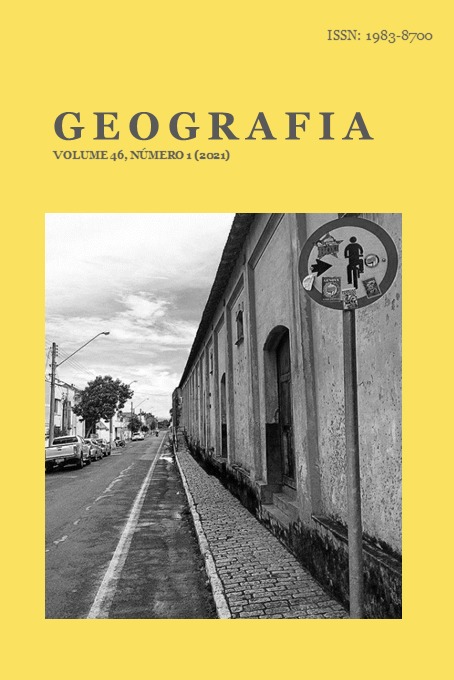URBAN CLIMATOLOGY AND THE USE OF REMOTE SENSING: A CASE STUDY IN A SMALL TOWN IN A TROPICAL HIGH ALTITUDE CLIMATE
DOI:
https://doi.org/10.5016/geografia.v46i1.16047Abstract
The changes in land use associated with urbanization and industrialization modify the microclimate, leading to the formation of urban heat islands, in which cities are warmer than the surrounding landscape. In this sense, this study seeks to analyze the pattern of land use and land cover and the Land Surface Temperature (TST), which was estimated from orbital images of Sensor TIRS, Landsat 8, on 2 dates in the summer and winter months of the year 2017, as well as seek indicators of the correlation between Surface Temperature and Air Temperature from 5 points of analysis on the study area, comprising the urban perimeter of the municipality of Ponte Nova-MG, in Zona da Mata Mineira, a city situated on a dissected plateau and a Tropical Climate of altitude. The results showed a strong correlation (73.0%) between TST and air temperature, considering the Pearson correlation. As it was also verified a very strong correlation in summer (98.0%) and strong in winter (82.0%) between NDVI and Air Surface Temperature.
Downloads
Issue
Section
License
The authors maintain the copyright and grant GEOGRAFIA the right of first publication, with the articles simultaneously licensed under the Creative Commons BY 4.0 License, which allows sharing and adapting the articles for any purpose, as long as appropriate credits and provisions of image rights, privacy or moral rights. Other legal attributions can be accessed at: https://creativecommons.org/licenses/by/4.0/legalcode.en.
Geography, Rio Claro, SP, Brazil - eISSN 1983-8700 is licensed under the Creative Commons BY 4.0 License.





